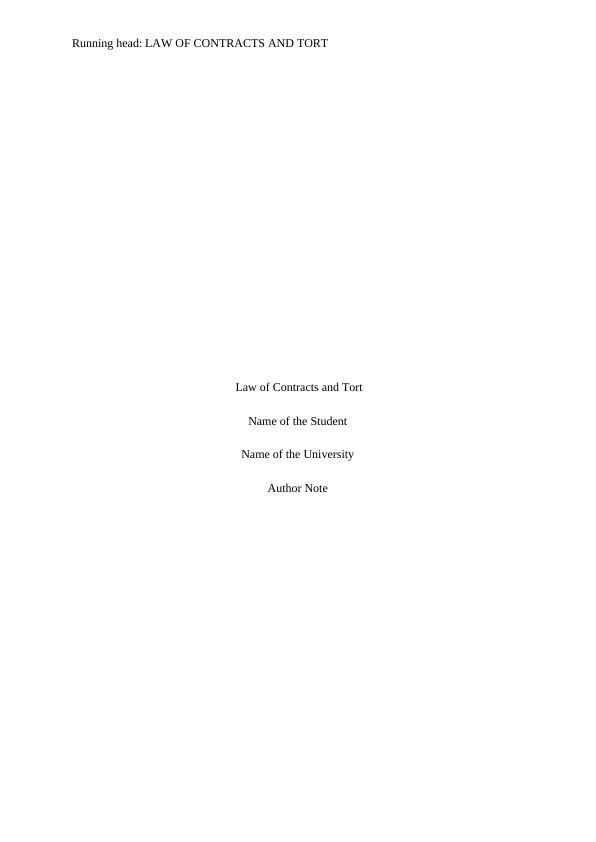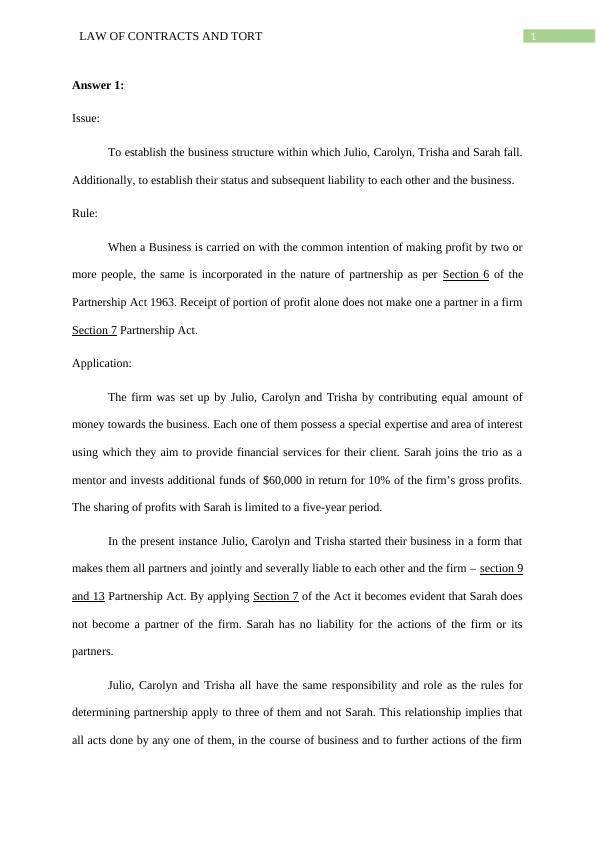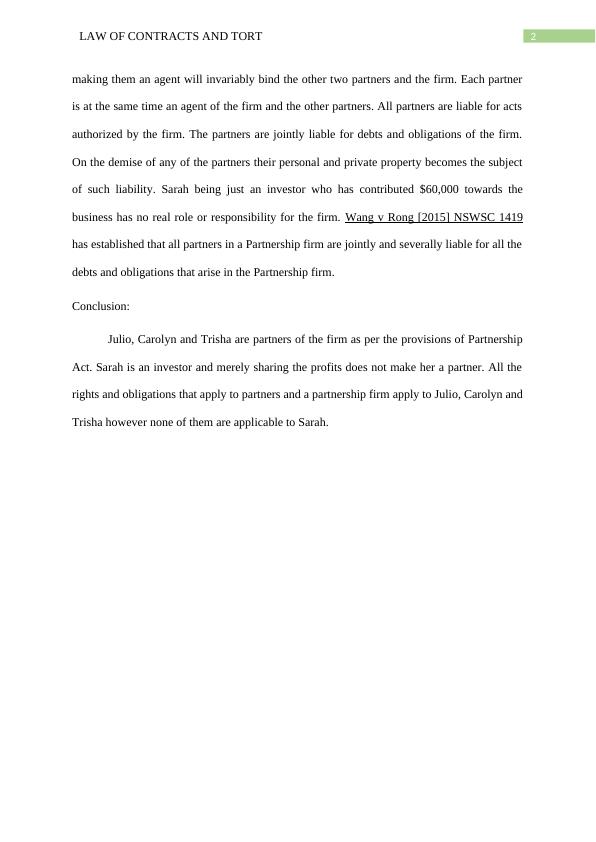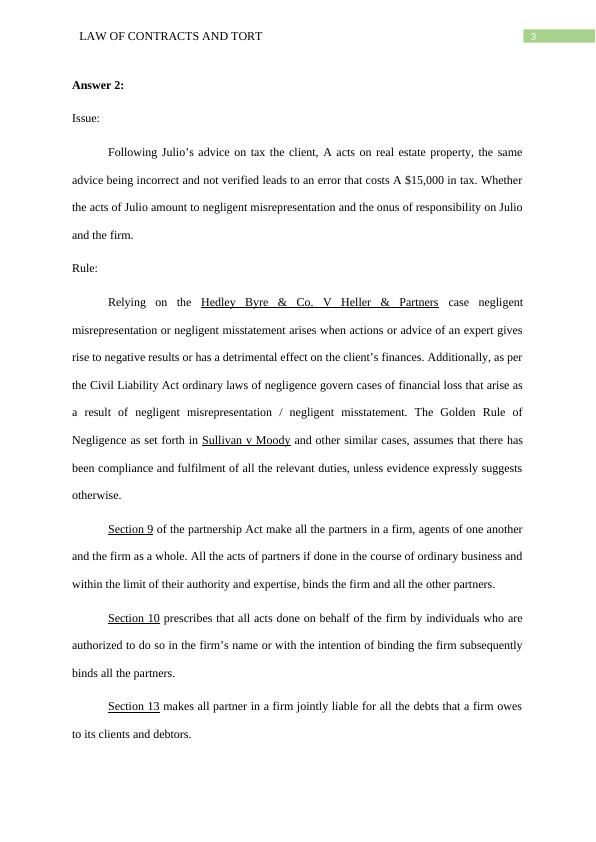Liability and Business Structure in Partnership
Memo for Final Take Home Exam in Company and Commercial Law for Teaching Period 3, 2019
12 Pages3027 Words386 Views
Added on 2023-04-21
About This Document
This article discusses the liability and business structure in a partnership and its impact on the partners and the firm. It explores the advantages and disadvantages of a partnership and suggests alternative business structures to limit liability and reduce risks.
Liability and Business Structure in Partnership
Memo for Final Take Home Exam in Company and Commercial Law for Teaching Period 3, 2019
Added on 2023-04-21
ShareRelated Documents
End of preview
Want to access all the pages? Upload your documents or become a member.
Partnership Law and Liability for Negligent Misrepresentation
|10
|3191
|155
Company and Commercial Law: Partnership Structure, Liability for Misrepresentation, and Risk Management Options
|9
|2212
|382
Company and Commercial Law
|12
|3092
|226
Liability of Partners in a Partnership Business Structure
|11
|3153
|139
Business Law: Partnership, Contractual Liability, and Negligent Misrepresentation
|13
|3540
|71
Business and Commercial Law: Partnership Structure and Liability
|12
|3907
|145




